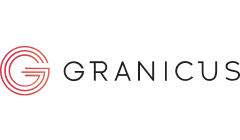From Many to One: Granicus’s Shift to a Single Work Management Platform With Wrike

From Many to One: Granicus’s Shift to a Single Work Management Platform With Wrike

The Granicus mission is to help bring government and citizens closer together. The SaaS company helps governments transform their customer experience through solutions that better connect, engage, and serve their constituents. More than 6,000 global government agencies have chosen Granicus to modernize their online services, website and CMS, digital communications strategies, public meeting experience, and records management. Granicus turned to Wrike for a more efficient way to deliver a better client experience.
Before Wrike, Granicus was using between five and eight different project management tools — inheriting these tools from a series of acquisitions — to execute and track work. With so many siloed tools, it was challenging to collaborate effectively and expensive to pay for so many licenses. Granicus needed a simpler way to standardize processes, increase team productivity, and improve client visibility, so internal teams could get aligned and work as one. “We have lots of teams that work together on bigger professional services projects,” explains Cassidy Pillow, Senior Manager of Client Services Operations at Granicus. “We needed to find one single solution to help us be more successful.”
“Our customers were having a hard time understanding what their responsibilities were and how to contact us,” recalls Debbie Prette, Director of Implementation at Granicus. “Updates were getting lost in emails and it was difficult to share information. We needed to improve our project management, time tracking, and external collaboration.” After carefully assessing multiple project management solutions on the market, Granicus scored Wrike as the best option to help its team streamline operations, increase customer satisfaction, and reduce technology costs.

“We’ve eliminated so many manual, paper tasks and processes with Wrike.”

By switching to Wrike, Granicus was able to centralize all teams into one project management platform — increasing visibility, alignment, and efficiency, delivering more standardized processes, reliable reports, and providing easier updates for external clients. “One of the main reasons we selected Wrike was because it was so intuitive. It just makes sense,” shares Pillow. “The integrations, APIs, automated workflows and processes — that’s what really sealed the deal for us with Wrike. It fits right into our existing tech stack.”
Wrike helped Granicus eliminate excess tech tools it didn’t need, offering 400+ integrations to keep work centralized. And because Wrike is so customizable, Granicus teams were able to adjust Wrike to their exact needs — empowering them to work how they wanted while also adhering to the organization’s processes. “Once our project managers started using Wrike blueprints, they realized that they didn’t have to build projects from scratch every time,” shares Prette. “And when they make an update to the process, they can simply revise the blueprint once and the change is implemented moving forward.”
“We’re also using Wrike blueprints to scale our onboarding processes internally,” continues Prette. “And it’s great because, as part of their onboarding, new hires learn Wrike for themselves. This makes them feel more comfortable as we use Wrike for more projects inside of the organization. We’re happy about that.”

“We were spending money on about eight different project management tools. But with Wrike, we’ve got it all in one place at a lower cost.”

As a professional services company, Granicus relies on Wrike’s external collaborator feature, which makes it easier to communicate with and deliver to clients. Granicus has grown 25% just in the past few years through several company acquisitions. Even as teams change with rapid growth, Granicus continues to improve efficiency. With the help of Wrike, Pillow’s team seamlessly serves 280-300 consultants. And, as Granicus acquires new companies, it doesn’t have to worry about pushback from the new teams that are onboarding.
Prette came to the team from an acquisition and was using Basecamp before adopting Wrike. “I was like, ‘This is fantastic, because now we have all three of the things we want. We have project management, we have time tracking, and we have collaborators.’ So I was a very early adopter, even though I came from an acquisition.”
“Those who have fully embraced the collaborator licenses and added customers to their projects have significantly cut down on email traffic updating customers,” says Pillow. Granicus even uses Wrike to automate some of that email communication by integrating Wrike and Outlook. “There’s so many different ways to manage users and permissions. We can plant seeds of Wrike, power users across teams, and help them self-serve a lot more than we were able to. It’s intuitive enough that you can train people to do certain things like assign their own projects, manage their own bookings, and track their time correctly and accurately,” Pillow says.
“We’ve also integrated Wrike with Salesforce and NetSuite,” adds Pillow. “So, now we’ve connected the most instrumental platforms for managing our close sales business. In Salesforce, we’re able to broadcast additional information about project statuses and professional services engagement because of the integration with Wrike. We’re also able to provide a high degree of specificity and confidence with the financial recording based on how real-time the integration is between Wrike and NetSuite.”
With all work centralized in Wrike, Granicus can more effectively track, execute, and report on projects to clients. By developing more standardized processes in Wrike, teams can now work faster — meaning Granicus can deliver more projects more quickly to clients. When asked what makes Wrike well suited to professional services teams, Pillow said it was “definitely the flexibility to serve different professional services units for different products.” Granicus offers 30 products across five different product families. “I talked a lot about our ability to make more processes uniform. But there’s also enough flexibility that we were able to give teams the keys to certain parts of their kingdom. In other tools I’ve seen, the flexibility to set customized permission sets were not replicated as vastly as Wrike.”
And because Granicus can now track time and billable hours in the same space where work is executed, it has seen a 20% increase in time tracking compliance since switching to Wrike. “What my team can work on in a day is way more impactful to the business than before. Wrike lets us prove the profitability of a project,” concludes Pillow. “With Wrike’s reporting tools, we can broadcast department-wide KPIs. My team can also pull reports to see the status of the things that we are responsible for, identify where we’re having compliance issues with processes that we rolled out, and pinpoint the teams that we need to work more closely with on managing their bookings or time tracking.”

“The only limitations that you have in Wrike are the limitations you put on yourself.”

Find out how Wrike can help your business
Schedule some time to talk with one of our experts.


